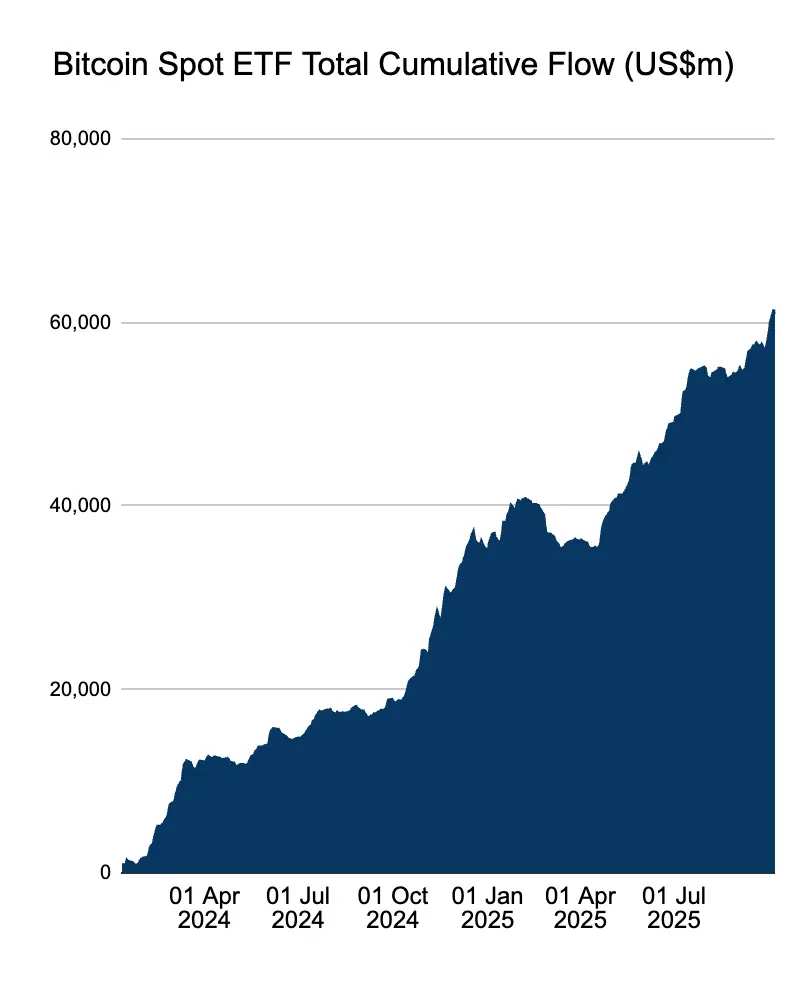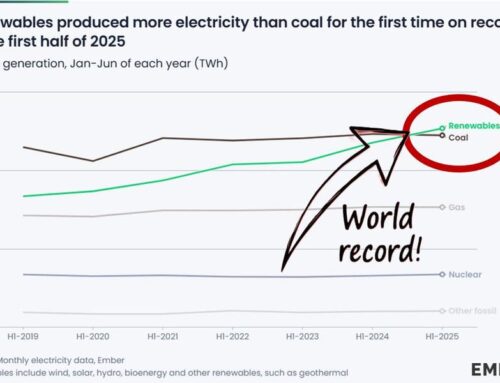Bitcoin ETFs attract approximately $10 billion in investments each quarter, leading to a s
October 9, 2025
As spot Bitcoin ETFs inject $5 billion to $10 billion into the market every quarter, institutional demand for Bitcoin is accelerating.
This new wave of capital is tightening Bitcoin’s supply and reinforcing its long-term bullish structure.
Hong Kim, Chief Technology Officer of Bitwise, citing data from Farside Investors, stated that ETF inflows have formed a “clockwork-like” steady force, describing it as a “long-term trend that even four-year cycles cannot stop,” and predicted that “a rally will re-emerge in 2026.”


The total assets under management of global crypto funds, including Bitcoin and Ethereum-themed products, have surpassed $250 billion, indicating that institutions are incorporating digital assets into diversified portfolios.
The steady inflow of institutional capital is not only driving up prices but also reshaping Bitcoin’s supply dynamics.
Andrei Dragos, Head of European Research at Bitwise, disclosed that institutions have cumulatively purchased 944,330 Bitcoins in 2025, surpassing last year’s total of 913,006.

In comparison, miners have produced only 127,622 new coins this year, with institutional purchases amounting to 7.4 times the supply of newly minted coins.
This imbalance stems from the U.S. Securities and Exchange Commission’s final approval of spot Bitcoin ETFs in 2024.
The approval triggered a structural shift: demand for regulated funds suddenly outpaced supply, reversing the low institutional participation seen during 2020-2023 due to policy uncertainties.
BlackRock’s entry through the iShares Bitcoin Trust was symbolic, prompting other giants to follow suit.
With warming U.S. policy signals and increasing recognition of Bitcoin as a treasury reserve asset, this trend extended into 2025. Some government-backed enterprises began directly incorporating Bitcoin into their balance sheets, highlighting its growing institutional credibility.
Given that nearly three months remain in the year and inflows show no signs of slowing, analysts anticipate that the Bitcoin supply shortage will intensify.
The gap between issuance and demand indicates that ETF-driven asset accumulation has fundamentally altered market dynamics, gradually stripping Bitcoin of its speculative nature and transforming it into a globally recognized financial instrument with sustained institutional demand.
Search
RECENT PRESS RELEASES
Related Post


